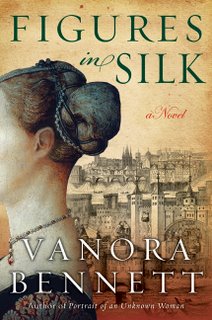 However comprehensively our consciousnesses have been raised by generations of feminism, women still have a way to go. We still don't quite have half the top jobs, or half the wealth. This may be because we're still running into glass ceilings put in place by other people, which stop us reaching the heights we aspire to in the workplace. Or, with some women, it may be because the glass ceilings are inside their own heads. Sometimes, if you ask a woman about her work, she'll react with self-deprecating murmurings, a dismissive flap of a hand, and a faint pinkness about the cheeks --- a response that looks almost like shyness. What, li'l old me?
However comprehensively our consciousnesses have been raised by generations of feminism, women still have a way to go. We still don't quite have half the top jobs, or half the wealth. This may be because we're still running into glass ceilings put in place by other people, which stop us reaching the heights we aspire to in the workplace. Or, with some women, it may be because the glass ceilings are inside their own heads. Sometimes, if you ask a woman about her work, she'll react with self-deprecating murmurings, a dismissive flap of a hand, and a faint pinkness about the cheeks --- a response that looks almost like shyness. What, li'l old me?Perhaps because I've occasionally caught myself doing this shy, modest thing, I really enjoyed writing the heroine of my current novel, Figures in Silk.
Isabel is a gutsy gal. After an early brush with tough career women, she decides her best chance of happiness in life is not through love, but through building an adventurous business of her own. Then she goes out and does it. She's often baffled by love, when it does come into her life, but she embraces her own bright, enterprising, creative ruthlessness right from the start.
I think this quality in Isabel makes her attitude to her working life, and the emphasis she places on it, a good subject for reading groups --- something that is still of concern to every woman, more than five centuries later.
Isabel's business acumen is a rather surprising attribute for a character in a story about the Middle Ages. The story is set in medieval London --- not a place you'd normally associate with enlightenment and opportunity for women. But, strangely enough, it turns out that the fifteenth century was rather a good time to be female and ambitious. The Black Death a century earlier had shrunk the population of Europe by a third. There'd been wars across the continent ever since, wiping out swathe after swathe more men. So there were scarcely enough people, of either sex, to do the jobs and trades that still needed doing. And as a result, women got more of a crack at doing them than usual.
I was already aware that, with the husbands away at war, wives of the knightly class might run family estates that were the medieval equivalent of a sizeable business, and appoint priests, and preside at the local law court.
But what I didn't realize until I started researching this book was that this freedom sometimes also extended to the women of the middle classes of the day --- the merchant caste, living in towns.
One of the leading merchant trades was that of mercery, trading in cloth. Because the top end of the mercers' trade was the luxury textile product of the fifteenth century, silk, and women with delicate fingers were dominant as silk workers, it wasn't uncommon for mercers to be married to silkwomen. The silk-women, just like their men, took on apprentices (girls in the silk business) and trained them for a decade or more. They might trade "couvert de baron" --- with their husbands responsible for their debts --- or, more daringly, as "femmes soles," responsible for themselves. And, in the case of several real-life women who made a lot of money for themselves out of the silk trade in the fourteenth and fifteenth centuries, among them Isabel Fleet, Isabel Frowyck and Alice Claver, they got the biggest, most prestigious contracts of their day --- with the court --- and made fortunes that set them at the forefront of the City's male oligarchy.
This female breathing-space came to a natural end when the Tudor dynasty came to the throne of England at the tail end of the fifteenth century. The Wars of the Roses ended. And the return of peace and prosperity, for men, meant, paradoxically enough, that there were fewer opportunities for women. They had to wait till the late nineteenth century for their next attempt to get economic and political freedom.
It's still sometimes suggested that modern women would be happier performing "traditional" roles in the home, rather than trying to go out into the "world of men." I liked the quiet way that this story turned that notion on its head, reminding us that, right through the ages, there've also been women with a dream they wanted to follow at any price.
---Vanora Bennett

